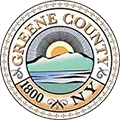Revitalization
Waterfront Resiliency
Four communities including the Village of Catskill have been working with the Hudson River Estuary Program to understand and prepare for the risk of future floods. The Village created a Waterfront Resilience Task Force which issued the Catskill Task Force Final Report, in 2019 recommending actions to increase the safety of waterfront areas.
Measures to protect waterfronts can include :
Community Initiatives
Village of Athens Local Waterfront Revitalization Program
The Village of Coxsackie was awarded $100,000 in 2018 to develop an LWRP and is currently in the planning process.
Resources
Workforce Housing
Workforce housing plays a crucial role in the sustainable development and economic vitality of Greene County. Our communities face unique challenges such as population decline, limited job opportunities, and an aging workforce. Establishing affordable and accessible workforce housing addresses these issues by attracting and retaining a skilled labor force, stimulating local economies, and fostering community resilience.
First and foremost, the availability of workforce housing is integral to attracting and retaining young professionals, skilled workers, and families in Greene County. Without adequate housing options, individuals might be forced to relocate to urban centers in search of better job prospects and living conditions. This exodus of talent exacerbates the population decline that many rural areas face, leading to a shrinking tax base and diminished community services. By providing affordable housing options, rural counties can create an environment where workers can comfortably settle down, contribute to the local economy, and invest in the community’s long-term growth.
Furthermore, workforce housing serves as a catalyst for economic growth within our county. When employees live closer to their workplaces, commuting times are reduced, resulting in increased productivity and reduced traffic congestion. Local businesses benefit from a reliable labor force, as workers are more likely to stay in the area when housing options align with their needs. As the local workforce grows, businesses can expand, new enterprises can be established, and entrepreneurial endeavors can flourish. This positive cycle of economic development not only bolsters job opportunities but also generates additional revenue for the county through taxes and increased consumer spending.
In times of crisis or change, such as economic downturns or shifts in industries, communities with strong workforce housing options are better equipped to adapt and endure. Rural New York counties with well-planned housing initiatives can foster a sense of stability and continuity, as families and workers are less likely to uproot their lives during challenging times. This resilience extends to social and cultural aspects, preserving the unique identity and heritage of these counties. Ultimately, by recognizing the importance of workforce housing, rural New York counties can lay the foundation for sustainable growth, improved quality of life, and a vibrant future.
The Greene County Legislature, through the Department of Planning and Economic Development, has recently prepared a Workforce Housing Attainability Assessment to examine the Workforce Housing Attainability climate in Greene County and broaden the understanding of the components of a healthy housing mix.
Read the Workforce Housing Attainability Assessment
Read “The Great People Shortage and its Effect on the Hudson Valley”
Read the Housing Action Plan of 2008
Cairo Main Street Plan
 As part of its Main Street Revitalization Program, the County worked with the Town of Cairo on the creation of its first Main Street Strategy. The Strategy analyzed the physical and business conditions in the Main Street study area, which is the entire Main Street from its connection with Route 23 east to its connection at Route 23 west. Dadras Architects, a nationally-recognized Main Street revitalization firm prepared the Plan with the assistance of the County Economic Development, Tourism and Planning Department.
As part of its Main Street Revitalization Program, the County worked with the Town of Cairo on the creation of its first Main Street Strategy. The Strategy analyzed the physical and business conditions in the Main Street study area, which is the entire Main Street from its connection with Route 23 east to its connection at Route 23 west. Dadras Architects, a nationally-recognized Main Street revitalization firm prepared the Plan with the assistance of the County Economic Development, Tourism and Planning Department.
